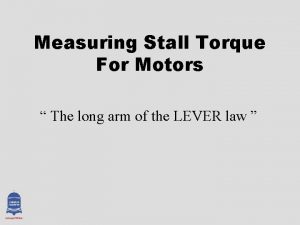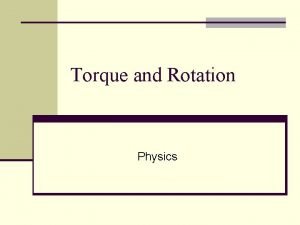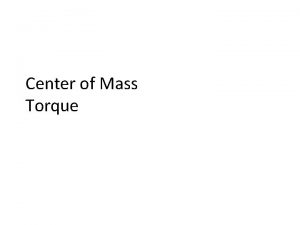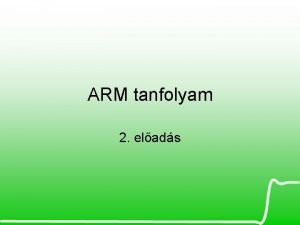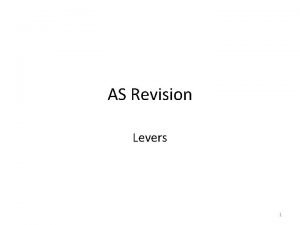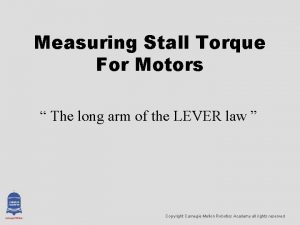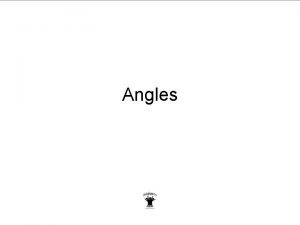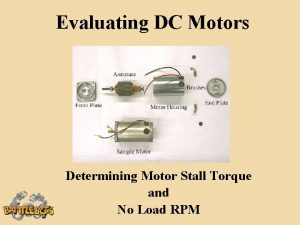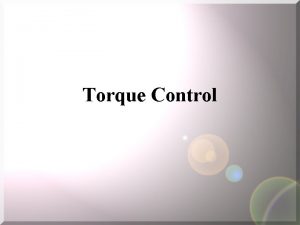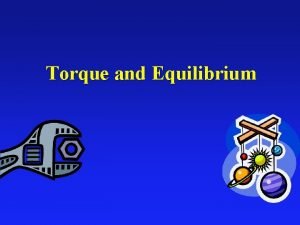Measuring Stall Torque For Motors The long arm







- Slides: 7

Measuring Stall Torque For Motors “ The long arm of the LEVER law ”

INTRODUCTION § In this investigation students will learn how to measure stall torque for motors or determine the point where the clutch will disengage without causing damage to the motor. The control variable in this lesson is the point where the motor stalls or the clutch disengages. § Torque is the variable that will be measured. This will be accomplished by altering the amount of weight lifted or moving the position of the weight on the lever.

Motor Stall Torque § As the load on the lever is moved further from the fulcrum the amount of weight lifted will decrease. § Limiting Factors – Clutch slippage – Motor temperature – Friction

Investigation 1 Condition 1 § § § § § Place the weight basket on to the outermost slot on the lever. Measure the distance from the axle to the hole, record distance. Add small amounts of weight to the basket at the end of the lever arm until the motor will not lift. Measure the weight utilizing your scale, weigh basket and weights. Record the data. Repeat the experiment three times to confirm your results. Average your results and record your data. Convert the result of your test from inch / ounces into foot / pounds. Convert your data to Newton / centimeters

Materials § Build Test bed from VEX kit § VEX Motor equipped with clutch § Scale - Any type of scale that will measure ounces and grams § Weight – any small objects that will weigh 1 to 2 ounces each

THEORY § For our purposes TORQUE is defined as the FORCE the motor exerts upon its load.

INCEASE MOTOR TEMPERATURE CAUSE EFFECT
